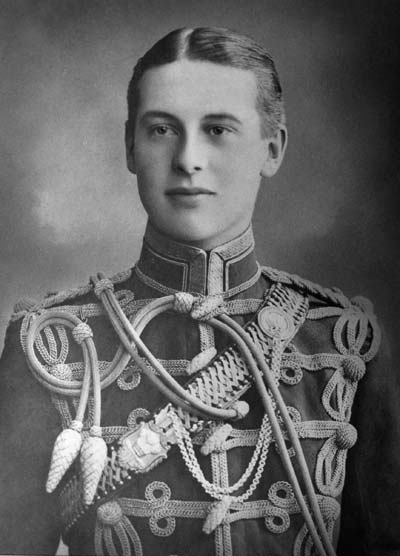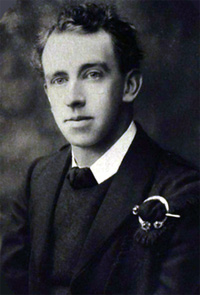Hospital Depot For wounded WWI Soldiers
On January 6th 1916 Tipperary was chosen to be the first depot in Ireland for wounded soldiers in a post-hospital stage of recovery. In announcing the establishment of this depot during World War One it was initially stated that the depot would accommodate 4,000 such individuals. This statement possibly relates to the Barracks already in existence in Tipperary Town.

During the First World War, the Tipperary Town Military Barracks played two decidedly different roles. In 1914-15, it was the headquarters for the 49th Brigade 16th. Irish Division and 7th. & 8th. Battalions, Royal Irish Fusiliers, who were all trained here for service, before being dispatched to the Western Front. From 1916 however this same Barracks became more a place where efforts were made to undo damage caused by war, when for several years the Barracks appears to have become more a centre for the recuperation and rehabilitation of wounded soldiers.
The Barracks was well kitted-out, with administration offices, an armoury & magazine, workshops, stables, accommodation blocks, an Officer’s Mess & Sergeants’ Mess, and obviously a cook house & canteen. So to was a Chapel, the aforementioned hospital, a school, laundry, bath-house, latrines, band-room, guard room, detention barracks, stores, and a water tower. The Barracks also boasted a miniature rifle range, with a larger outdoor range nearby at Ballyglass.
At the start of ‘The Great War’ in 1914 the number of troops then stationed in the Town, are estimated at above 4,000 rising possibly as high as 10,000, while being used as a ‘Posting Area’ to muster and train newly recruited troops, who were in long term destined for slaughter on the battlefields of France.
Today there are virtually no surviving records for military hospitals in existence relating to either the administration, or to the patients involved who passed through. In general very few admission and discharge records survive for military units anywhere, due to bombings in WWII. Other hospitals which existed for civilian purposes pre-war and later who carried on in a similar capacity post-war, same were most likely destroyed. Indeed for the vast majority of soldiers, the only record of them having received medical attention are most likely to be found recorded on their service records, should even they have survived.
We are aware also that a small Military Hospital existed in Clonmel, in Co. Tipperary during WWI. Same was possibly situated behind Kickham Barracks and used for those wounded who emanating from Irish regiments.
Gallipoli Evacuation

William Maurice “Pat” Armstrong
Between Monday January 3rd. and Sunday January 9th. 1916 the evacuation of remaining Gallipoli troops is taking place, from Cape Helles. Suvla Bay has already been evacuated some weeks earlier on the 10th-20th December 1915.
An officer helping with this evacuations rear guard is Tipperary man and formerly Sligo born Captain William Maurice ‘Pat’ Armstrong, Moyaliffe, Thurles, Co. Tipperary. Pat was the only son of Captain Marcus Beresford Armstrong and his separated wife, the very beautiful, Rosalie Cornelia Maude. Rosalie was a blood relative of Cornwallis Maude, the first Viscount Hawarden of Dundrum, (Now the Dundrum House Hotel) here in Co. Tipperary.
[Note: I strongly recommend that those of our readers interested in the Tipperary History of this period visit the wonderful website http://longwaytotipperary.ul.ie, which will allow you to truly travel back in time.]
The secret withdrawal of troops is being hampered by excessively windy weather and heavy seas running into the Cape Helles harbour. Fuses are being lit to destroy large amount of remaining stores including ammunition. The stores containers and ammunition boxes will be set alight on the beaches to manufacture a smoke screen, thus hiding the departure of the troops being evacuated.
Painstaking efforts had been made to deceive the some 100,000 watching Turkish troops into believing that the movement of Allied forces does not appear to constitute a withdrawal. Some 480,000 Allied troops had participated in this Gallipoli campaign. Of this figure 252,000 had suffered casualties including 48,000 fatalities; many of them Irish. Turkish casualties are estimated at 250,000, with at least 65,000 believed to be fatalities.
What is happening in the Thurles area in 1916?
According to the Bureau of Military History, James Leahy, Tubberador, Holycross, Thurles had originally joined the Irish Volunteers in 1914, but found most of this movement slowly move over to the Redmondite group in August of 1914. Leahy, formerly Commandant, No. 2 Mid Tipp-Brigade, was working for Mr Hughie Shelly and later for Mr Michael Bowe as an apprentice in the Grocery and Spirit business in Liberty Square (Today Long’s News Agency). He remained working with the latter until the end of 1916, when he became ill and was forced to return home for a period to recuperate from his sickness. He later returned to his trade in Thurles early in 1917, going to work for Michael or (‘Mixey’ as he was more locally known) O’Connell.
Mixey O’Connell was a prominent Sinn Feiner and an Irish Volunteer and his business establishment would later become the headquarters of the Mid-Tipperary Brigade. Leahy lived on this premises in Liberty Square, while in O’Connell’s employment and became further heavily influenced by his latest employer.
Other Irish Volunteer units in the neighbourhood at the commencement of 1916, were in the villages of Glengoole and Inch (The Ragg), Thurles. At Glengoole, the man in charge of Volunteers was Mr Johnny Norton, a friend of the Citizen Army Chief, James Connolly, through their association with the Irish Transport Workers’ Union. Norton would later become Vice-Commandant of the 1st Batta1ion, Mid-Tipperary Brigade. Certainly shotguns were then being sent to Glengoole from Liberty Hall, in Dublin.
At Inch, heading up Irish Volunteer was a mere schoolboy, Eddie Meagher of Annefield, who would later go on to become an ordained priest. In November 1915, Meagher brought a couple of miniature rifles and a number of shotguns also from Liberty Hall, in Dublin to Thurles, transferring them to his own home in Annefield. These rifles were later used for target practice on Sundays, during the opening months of 1916.
Early in 1916, James Leahy was sworn in as a member of the Irish Republican Brotherhood (I.R.B.) by Mr James (Jimmie) Kennedy, then Thurles Town Clerk in Thurles, (Jimmy then resided in Parnell Street, Thurles, in the house today owned by Mrs Alice Hogan.), and the person responsible for the reorganisation of the Irish Volunteers in Thurles in 1915. Jimmie Kennedy was understood to be in direct contact with the leaders of the 1916 Rising. Indeed a secret dispatch was received by him on Easter Saturday from Dublin. However in pursuance of whatever instructions he received, he set out on a bicycle journey during the course of which he fell suffering minor injuries.

Thomas MacDonagh
This accident however did not prevent him from calling a meeting of the Thurles I.R.B. on Easter Monday to his convalescent bedside, during which time he informed those summoned regarding the start of ‘The Rising’ in Dublin and also made arrangements for the transfer of five or six more rifles and a couple of automatic pistols from Thurles to Annefield via Leahy, Michael Eustace, Mick Burke, Kathleen and Josephine Maher latter later to become Leahy’s wife. These weapons on arrival at Annefield were handed over to Eamon O’Dwyer, Ballagh, Co. Tipperary and some of the Inch Volunteers. Leahy and his Volunteer comrades now waited instructions and news from Dublin.
Thirty-eight year old Thomas MacDonagh, the poet, playwright and revolutionary leader, born in Cloughjordan, Co. Tipperary, was one of the seven signatories of the Proclamation of the Irish Republic. He was also the Commandant of the 2nd Battalion, Dublin Brigade captured during fighting in Dublin’s Jacob’s Biscuit factory. His brother Joe MacDonagh, was then stationed here in Thurles; occupied as an Excise Officer. Joe met Leahy several times during the days after ‘The Rising’ to exchange information regarding the fighting in Dublin. It was during one of these exchanges in Bowe’s Pub & Grocery shop that Joe informed Leahy that his brother Tom (Thomas MacDonagh) had been executed by the British for his part in ‘The Rising’.
On the Thursday following Easter the Royal Irish Constabulary (R.I.C.), in large numbers raided Meagher’s of Annefield. Their search found no personnel and no weapons, only a very young Eamon Meagher, whom they dismissed as being of little importance.
After the suppression of the Easter Rising the Irish volunteer movement around Thurles went temporally out of existence, because of the fear of reprisals. Realising nothing was happening locally the Volunteers movement were revived again by Jimmy Kennedy; later in the mid summer of 1916. Almost all answered the call and Tipperary would continue where Dublin failed.

Lovely reading, Thanks Thurles Info.